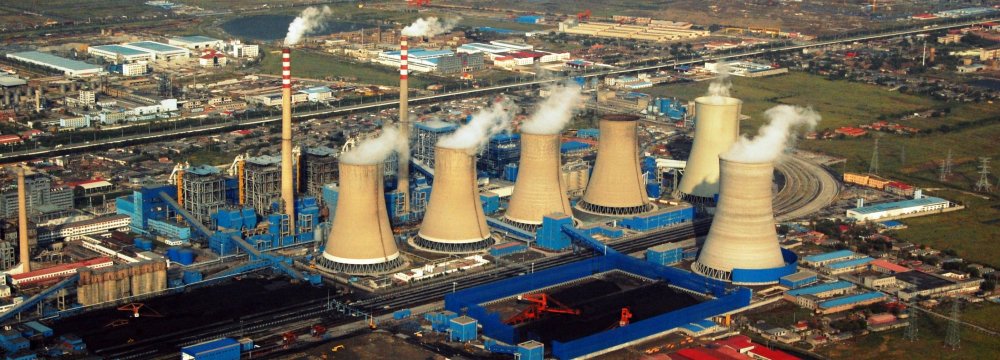
China Turns to Nuclear Power for Winter Heating

State-owned China National Nuclear Corp recently conducted a successful 168-hour trial run in Beijing for a small dynamic hydro reactor named “Yanlong”, CNBC reported.
With the north facing natural gas shortages as cities switch away from coal, CNNC presented “DHR-400” as an alternative heat supplier for the region, with each 400-megawatt unit capable of warming 200,000 urban households.
The model—which consists of a reactor core immersed in a water-filled tank around the same volume as an Olympic swimming pool—will require $226.7 million in investment and take just three years to build, a crucial advantage in a sector plagued by construction delays.
As a small and relatively simple “swimming pool” design, the low-pressure reactor is expected to be safer than conventional models, with temperatures not exceeding 100 degrees Celsius, and it could be plugged directly into existing heating networks.
"The technology is ready," said Gu Shenjie, deputy chief engineer with Shanghai Nuclear Engineering Research and Design Institute, part of the State Power Investment Corp.
“CNNC have supplied heat to their institute and office buildings, and have successfully done that for three years,” Gu told Reuters on the sidelines of the INNCH New Nuclear Build Conference in Shanghai, adding that commercialization was the next stage.
“I think it is workable. The parameters are very low and it is easy to maintain operations,” he added.
While the use of conventional nuclear plants to provide heating is common in Russia and Eastern Europe, China aims to be the first country to build reactors dedicated to the task of warming its cities.
China is pumping billions of yuan into advanced nuclear technology that will not only boost domestic capacity but also strengthen its global presence. It aims to develop a portfolio of reactors capable of powering cities, remote islands, ships, cars and even airplanes.
With northern China still relying on centralized heating systems, a dynamic hydro reactor in every city could be an ideal solution, said Cheng Huiping, a CNNC technical committee member. The firm said the technology would use only 2% of the radioactive sources used in a conventional 1-gigawatt nuclear power plant, but winning public acceptance remains a hurdle.


Trump weighs using $2 billion in CHIPS Act funding for critical minerals

Codelco cuts 2025 copper forecast after El Teniente mine collapse

Electra converts debt, launches $30M raise to jumpstart stalled cobalt refinery

Barrick’s Reko Diq in line for $410M ADB backing

Abcourt readies Sleeping Giant mill to pour first gold since 2014

Nevada army depot to serve as base for first US strategic minerals stockpile

SQM boosts lithium supply plans as prices flick higher

Viridis unveils 200Mt initial reserve for Brazil rare earth project

Tailings could meet much of US critical mineral demand – study

Kyrgyzstan kicks off underground gold mining at Kumtor

Kyrgyzstan kicks off underground gold mining at Kumtor

KoBold Metals granted lithium exploration rights in Congo

Freeport Indonesia to wrap up Gresik plant repairs by early September

Energy Fuels soars on Vulcan Elements partnership

Northern Dynasty sticks to proposal in battle to lift Pebble mine veto

Giustra-backed mining firm teams up with informal miners in Colombia

Critical Metals signs agreement to supply rare earth to US government-funded facility

China extends rare earth controls to imported material

Galan Lithium proceeds with $13M financing for Argentina project

Kyrgyzstan kicks off underground gold mining at Kumtor

Freeport Indonesia to wrap up Gresik plant repairs by early September

Energy Fuels soars on Vulcan Elements partnership

Northern Dynasty sticks to proposal in battle to lift Pebble mine veto

Giustra-backed mining firm teams up with informal miners in Colombia

Critical Metals signs agreement to supply rare earth to US government-funded facility

China extends rare earth controls to imported material

Galan Lithium proceeds with $13M financing for Argentina project

Silver price touches $39 as market weighs rate cut outlook

















